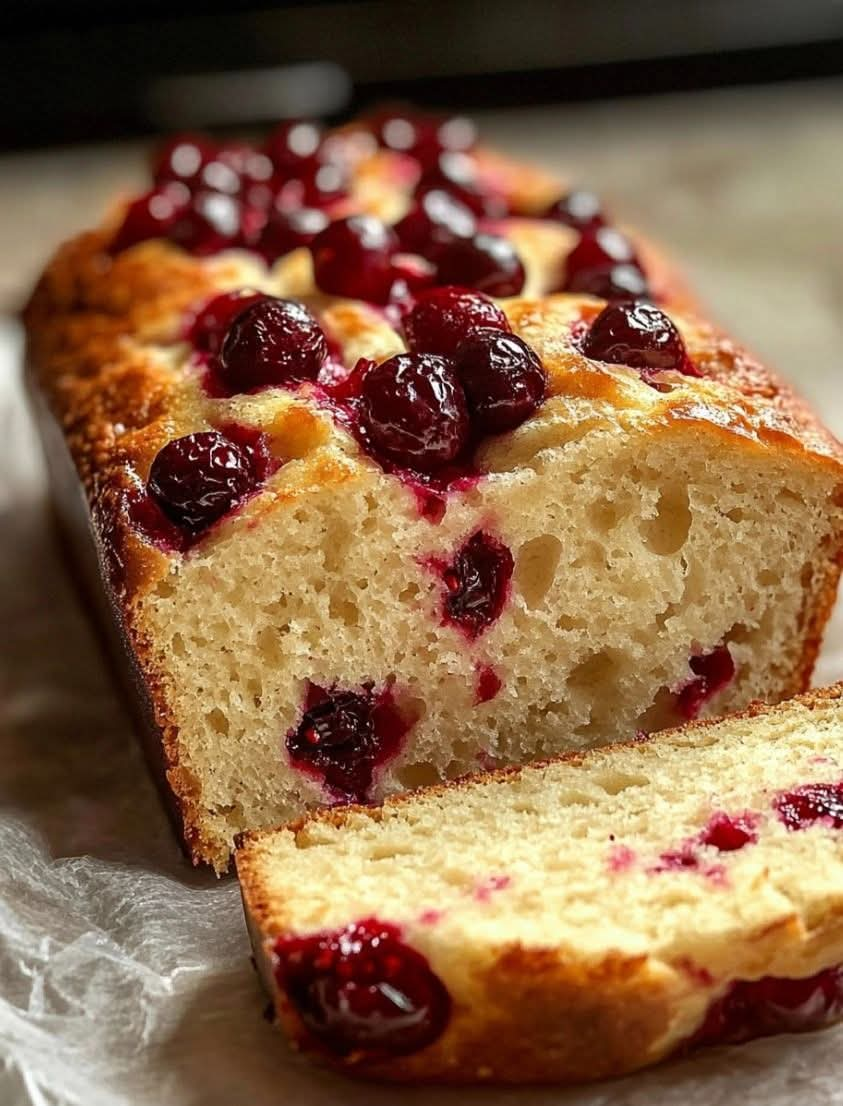Absolutely! Here’s a rich, detailed, and delicious bread recipe wrapped in storytelling, history, methods, and all the love you could ask for. Let’s dive into the kind of recipe that would definitely make a neighbor call back five minutes later.
🍞 GRANDMA’S CLASSIC COUNTRY WHITE BREAD
“The Bread That Makes Neighbors Knock Twice”
🧡 INTRODUCTION
There’s something timeless about a warm, freshly baked loaf of bread. The crackling crust, the soft, airy crumb, the yeasty aroma that wraps a house in a hug—it’s more than food. It’s history. It’s comfort. It’s connection.
This recipe comes from generations of bakers who didn’t need fancy machines, just flour, time, and care. It’s the kind of bread that makes memories. Whether you’re spreading butter on a slice for breakfast or using it to sop up a hearty stew, this bread will make people smile—and ask for seconds.
🌾 A LITTLE HISTORY
Before supermarkets, bread was the soul of the home kitchen. Families baked once or twice a week, kneading dough with their hands, letting it rise in warm corners of the home. This recipe is a descendant of the classic country white bread loaves made in American and European kitchens during the late 19th and early 20th centuries—basic, reliable, beautiful.
It’s known as a lean dough bread: no eggs, no dairy, just the essentials. It’s the canvas of breadmaking. Even famous bakers like Julia Child and James Beard praised this kind of loaf for its simplicity and versatility.
🍽 INGREDIENTS
(For 2 full-size loaves)
- 6 ½ to 7 cups all-purpose or bread flour
- 2 ¼ tsp (1 packet) active dry yeast
- 2 ½ cups warm water (about 105°F/40°C)
- 2 tbsp granulated sugar
- 1 tbsp salt
- 2 tbsp neutral oil or melted butter (optional for richer flavor)
🛠 METHODS & INSTRUCTIONS
1. Activate the Yeast
In a large bowl, combine:
- 2 ¼ tsp active dry yeast
- 2 tbsp sugar
- ½ cup of the warm water
Let sit for 5–10 minutes until frothy. If it doesn’t foam, your yeast may be expired—try again with fresh yeast.
2. Form the Dough
To the yeast mixture, add:
- Remaining warm water (2 cups)
- 3 cups flour
- Salt
Stir until combined. Gradually add remaining flour (3–4 cups), one cup at a time, until a rough dough forms.
3. Kneading
Turn dough out onto a floured surface. Knead for 8–10 minutes, adding small amounts of flour as needed, until dough is smooth, elastic, and slightly tacky—but not sticky.
💡 Love Method #1: Kneading is a meditation. Pour your care into it. Talk to the dough. Tell it you love it. It helps, really.
4. First Rise
Place dough in a greased bowl, cover with a damp towel or plastic wrap, and let rise in a warm place for 1 to 1.5 hours, until doubled in size.
💡 Love Method #2: Let the dough rest while you write a letter to someone you care about. Bread rises best in the presence of good vibes.
5. Shaping
Punch down the dough (gently!). Divide in half. Shape into loaves and place into two greased 9″x5″ loaf pans.
6. Second Rise
Cover and let rise again for 30–45 minutes, until dough has risen just above the edge of the pans.
7. Baking
Preheat oven to 375°F (190°C).
Bake for 30–35 minutes, or until golden brown and hollow-sounding when tapped on the bottom.
Optional: brush with melted butter after baking for a softer crust and heavenly aroma.
💌 FORMATION & FEELINGS
This bread forms from simple elements—flour, water, yeast—but its texture, rise, and flavor are shaped by your hands, your warmth, your home. That’s why every loaf tastes a little different. It’s alive. It’s you, in bread form.
🧑🤝🧑 LOVED BY MANY
- The Neighbors: “She brought one loaf. I begged her for the recipe after the first bite.”
- The Kids: “Mom, this tastes better than store bread! Can I have another slice?”
- The Grandparents: “Tastes just like what we had growing up.”
- The Bread-Lovers Anonymous Group: “Hi, I’m Jim, and I eat half a loaf before it even cools. And I’m not sorry.”
🧠 PRO TIPS
- Want more flavor? Ferment your dough overnight in the fridge after the first rise.
- Want a chewier crust? Bake on a stone and add steam to your oven.
- Want to make it unforgettable? Add rosemary, roasted garlic, or a swirl of cinnamon-sugar.
🏁 CONCLUSION
This bread isn’t just baked—it’s shared. It’s a love letter in loaf form, warm from the oven and meant to be torn by hand and passed around. If you bring it to a neighbor, expect them to call back asking for the recipe. If you serve it at dinner, expect silence—because their mouths will be full.
Bake it once. You’ll bake it forever.
Would you like a printable version or a visual step-by-step? I can make one!
